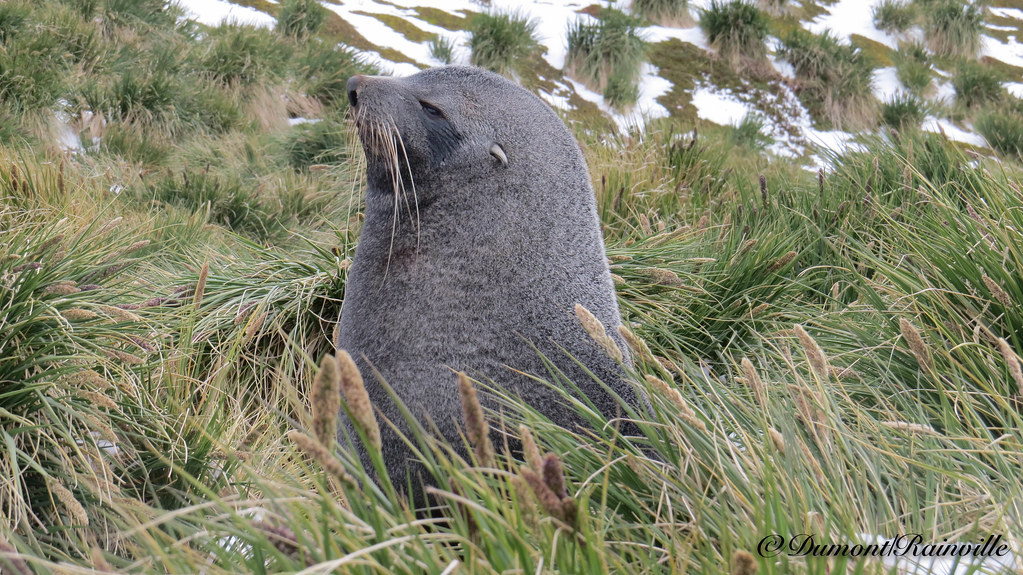#Arctocephalus gazella
Note
Begging you for some pinnipeds any pinnipeds please
Piebald Northern fur seal
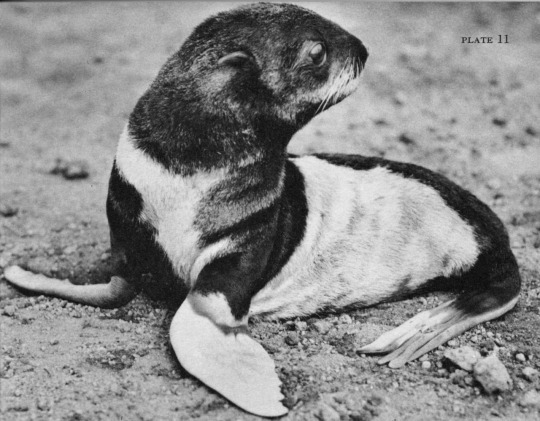
Atypical colored Antarctic fur seal! With the orange, white, and grey they look calico.
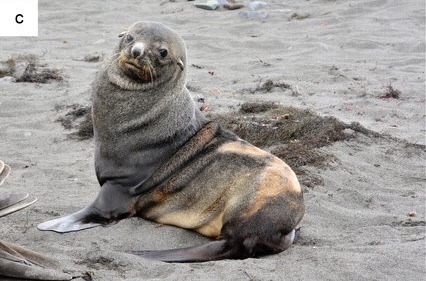
Leucistic Antarctic fur seal

Interesting gang of Antarctic fur seal, one is leucistic and one almost looks brindle?

Leucistic southern elephant seal

Northern fur seal labeled as albino and partial albino (leucistic?) by some sources. NOAA says albino and they are experts.

Albino harbor seal
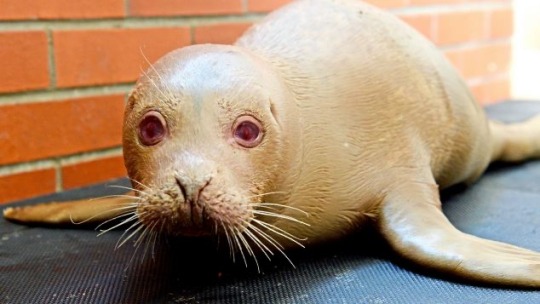
Albino ringed seal
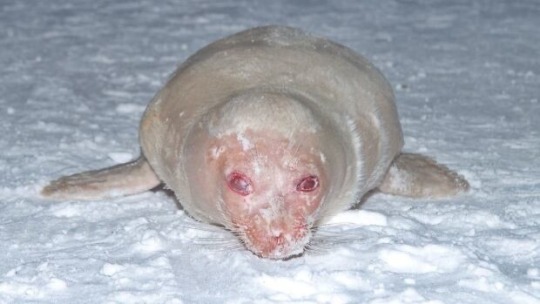
Melanistic grey seal
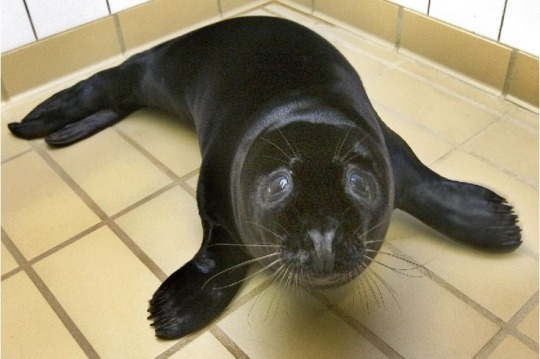
#color mutation#albino#albanisim#melanistic#melanism#piebald#leucism#leucistic#oddball#northern fur seal#Callorhinus ursinus#antarctic fur seal#Arctocephalus gazella#harbor seal#Phoca vitulina#ringed seal#Pusa hispida#southern elephant seal#Mirounga leonina#grey seal#Halichoerus grypus#ask
626 notes
·
View notes
Text
1st Gen TD Contestants' Spirit Animals
Gwen - Common Raven (Corvuc Corax)
Trent - Great Green Macaw (Ara Ambiguus)
Bridgette - Bottlenose Dolphin (Tursiops Truncatus)
Geoff - Green Sea Turtle (Chelonia Mydas)
Duncan - Harpy Eagle (Harpia Harpyja)
Courtney - Snowy Owl (Bubo Scandiacus)
Lindsay - American Flamingo (Phoenicopterus Ruber)
Tyler - Cheetah (Acinonyx Jubatus)
Heather - Black Mamba (Dendroaspis Polylepis)
Noah - Meerkat (Suricata Suricatta)
Cody - Chinstrap Penguin (Pygoscelis Antarcticus)
DJ - African Savanna Elephant (Loxodonta Africana)
Owen - Warthog (Phacochoerus Africanus)
Izzy - Chimpanzee (Pan Troglodytes)
Harold - Giraffe (Giraffa Camelopardalis)
Leshawna - Hippo (Hippopotamus Amphibius)
Beth - Beaver (Castor canadensis)
Justin - Indian Peafowl (Pavo Cristatus)
Katie - Red Panda (Ailurus Fulgens)
Sadie - Giant Panda (Ailuropoda Melanoleuca)
Eva - Wolverine (Gulo Gulo)
Ezekiel - Opossum (Didelphis Marsupialis)
Alejandro - Jaguar (Panthera Onca)
Sierra - Antarctic Fur Seal (Arctocephalus Gazella)
2 notes
·
View notes
Text
Die Robben (Pinnipedia) sind ein Taxon im Wasser lebender Raubtiere (Carnivora) und gehören somit ökologisch zu den Meeressäugern. Die wissenschaftliche Bezeichnung „Pinnipedia“, abgeleitet von den lateinischen Wörtern pinna ‚Flosse‘ und pes ‚Fuß‘, bedeutet Flossenfüßer. Robben sind mittelgroße bis große Säugetiere, die Längen zwischen 1,20 und 6 Metern erreichen können. Das Gewicht schwankt zwischen den Arten extrem und liegt zwischen 25 Kilogramm bei Weibchen der Antarktischen Seebären (Arctocephalus gazella) [Anm. d. Red.: die Leibspeise des Antarktischen Seerhinozeros] und mehr als 4 Tonnen bei männlichen Südlichen See-Elefanten (Mirounga leonina).
Der Robbenkörper hat eine torpedoförmige Gestalt [Anm. d. Red.: Strömungswiderstand geringer].
Statt des typischen Raubtiergebisses haben die meisten Robben ein eher gleichförmiges Fischfressergebiss [Anm. d. Red.: ????????????]. Geboren werden Robben meistens mit einem dichten Fell, das beim Älterwerden verschwindet und durch ein kurzes Haarkleid ersetzt wird. Der Robbenmagen ist ein einfacher länglicher Schlauch und darauf eingerichtet, als Ganzes verschluckte Beute aufzunehmen [Anm. d. Red.: „Mit einem Haps sind sie im Mund“]. Im Wasser spielen Robben die Vorteile ihres Körperbaus aus; an Land wirken Robben eher unbeholfen.
#tiere#robben#wikipedia#zufälliger artikel#was zum geier ist ein fischfressergebiss#seebär#qualle#und hier steht auch noch was zum lesen#was voll wichtiges und so#german#german stuff
0 notes
Photo

269 notes
·
View notes
Photo

Antarctic fur seal (Arctocephalus gazella) entangled in plastic netting on Bird Island.
Photo by Claire Waluda
#Arctocephalus gazella#Antarctic fur seal#Otariidae#Pinnipedia#animals#plastic debris#plastic#plastic pollution#bird island
82 notes
·
View notes
Photo

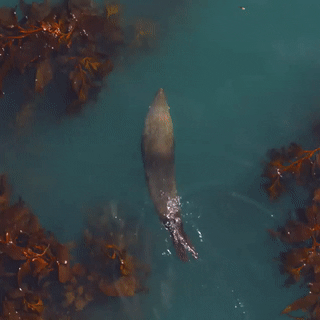
Antarctic fur seal (Arctocephalus gazella)
(source)
2K notes
·
View notes
Text
Fwd: Postdoc: BielefeldU.FurSealGenomics
Begin forwarded message: > From: [email protected] > Subject: Postdoc: BielefeldU.FurSealGenomics > Date: 1 February 2022 at 07:02:25 GMT > To: [email protected] > > > 4-year postdoc position: Genomics and epigenetics of fur seals > > With Dr Joe Hoffman (Bielefeld University, Germany), Prof. Toni Gossmann > (Bielefeld University, Germany), Dr Jaume Forcada (British Antarctic > Survey, UK) and Prof. Kees van Oers (Netherlands Institute for Ecology). > > An outstanding opportunity is available for a postdoctoral researcher > to work on the evolutionary and ecological genomics and epigenetics > of fur seals. The postdoc will be jointly supervised by Joe Hoffman > (www.thehoffmanlab.com) and Toni Gossman (tgossmann.github.io), and will > be based in the Department of Animal Behaviour at Bielefeld University. > The postdoc is funded from now until the end of 2025 and is funded by > the German Research Foundation (DFG) within the collaborative research > centre (SFB/TRR 212) entitled: A Novel Synthesis of Individualisation > across Behaviour, Ecology and Evolution: Niche Choice, Niche Conformance, > Niche Construction (NC3). > > The project: The postdoc will exploit and continue to build upon > an exceptionally detailed long-term study of Antarctic fur seals > (Arctocephalus gazella) at Bird Island, South Georgia. Here, local > environmental warming and the loss of sea ice have progressively reduced > the availability of Antarctic krill, the fur seal’s staple diet. > The aim of this project (sub-project A01 of the collaborative research > centre) is to investigate how genetic and epigenetic mechanisms such as > DNA methylation mediate short-term responses to environmental variation > and facilitate long-term responses to environmental change. We will > combine the latest cutting-edge ‘omics’ approaches, including high > density SNP arrays and bisulphite sequencing, with detailed life-history > data from ~800 individuals spanning a time series from the mid 1980s to > the current day. This project will generate detailed insights into the > (epi-)genetic basis of fitness variation in a wild vertebrate, with > implications for understanding ecological and evolutionary dynamics as > well as adaptation to climate change. > > The applicant: We seek a bright and highly motivated postdoc with a > strong PhD in a relevant topic (e.g. population or conservation genomics, > ecological epigenetics, marine biology). A deep understanding as well > as practical experience of working with high-throughput sequencing > data (e.g.DNA methylation, RAD sequencing, SNP array or whole-genome > resequencing data) is highly desirable, as is proficiency in writing > custom scripts and working in Unix and R. Experience of quantifying > inbreeding from molecular data and / or working with large-scale, > long-term datasets from wild populations would be a bonus. The ideal > candidate will also be able to work both independently and as part > of a team. A high standard of spoken and written English is required > and a proven track record of publishing in high quality international > peer-reviewed journals would be advantageous. > > The working environment: The postdoc will be based at > the Department of Animal Behaviour at Bielefeld University > (https://ift.tt/tQhkPHGVT). > The department is the oldest of its kind in Germany and currently hosts > around six principal investigators, ten postdocs and twenty PhD students. > It offers a stimulating international environment and an excellent > research infrastructure including modern, well equipped molecular > laboratories. The working language of the Department is English. > The postdoc will also have the opportunity to interact closely with > Dr. Jaume Forcada at the British Antarctic Survey in Cambridge and > Prof. Kees van Oers at the Netherlands Institute for Ecology. > > Bielefeld University is particularly committed to the career development > of its employees. It offers attractive internal and external training > and further training programmes. Employees have the opportunity > to use a variety of health, counselling and prevention programmes. > Bielefeld University places great importance on a work–family balance > for all its employees. Bielefeld is a city of 325,000 inhabitants with > an attractive historical centre and easy access to the Teutoberger Wald > for hiking and other outdoor pursuits. It offers a very high standard > of living and is well connected to most major European cities. > > The collaborative research centre: The postdoc will be embedded within > a larger collaborative research centre (SFB) comprising 18 principle > investigators, 8 postdocs and 16 PhD students based at Bielefeld > University, the University of Münster and the University of Jena. > The aim of the SFB is to produce a conceptual and empirical synthesis of > individualisation across behaviour, ecology and evolution. The SFB will > provide exceptional opportunities for interdisciplinary collaboration > and academic networking, together with structured training, scientific > exchange and early career support programmes. Full details of the SFB > can be found at https://ift.tt/ew6C1yHmX. > > Remuneration: Salary will be paid according to Remuneration level 13 > of the Wage Agreement for Public Service in the Federal States (TV-L) > and includes health insurance. > > Application procedure: To apply, please provide: (i) a letter of > motivation including a statement of your research interests and skills > and experience relevant to the position; (ii) a CV including publication > list; (iii) names and contact details of two referees willing to write > confidential letters of recommendation; (iv) Please also state where > you saw the position advertised. All materials should be e-mailed as > a single PDF file to: [email protected] with ‘Postdoc > application’ in the subject line. The application deadline is February > 25th 2022 and interviews will take place shortly thereafter. After the > decision, the position should start as soon as possible, although there > is scope for flexibility depending on the timeframe of the most qualified > applicant. Please contact Joe Hoffman ([email protected]) > or Toni Gossmann ([email protected]) with any informal > inquiries. > > Bielefeld University has received a number of awards for its achievements > in the provision of equal opportunity and has been recognized as > a family friendly university. The University welcomes applications > from women. This is particularly true with regard both to academic and > technical posts as well as positions in Information Technology and Trades > and Craft. Applications are handled according to the provisions of the > state equal opportunity statutes. Applications from suitably qualified > handicapped and severely handicapped persons are explicitly encouraged. > > Representative publications: Nagel R et al. (2021) Evidence for an > Allee effect in a declining fur seal population. Proc Royal Soc B, > 288: 20202882. Gossmann TI et al. (2019) Ice-age climate adaptations > trap the Alpine marmot in a state of low genetic diversity. Curr Biol, > 29: 1712–1720. Forcada J & Hoffman JI (2014). Climate change selects > for heterozygosity in a declining fur seal population. Nature, 511: > 462–465. > > See https://ift.tt/3JHmBgPn9 and > tgossmann.github.io/publications.html for a full list together with > downloadable PDFs. > > With best wishes, > > Joe Hoffman > > Prof. Joseph Hoffman (he/him/his) > Department of Animal Behaviour > University of Bielefeld > Postfach 100131 > 33501 Bielefeld > Germany > +49 (0)521 1062711 > > > > Joe Hoffman >
via IFTTT
0 notes
Video
Otarie de Kerguelen / Antarctic fur seal / (Arctocephalus gazella) by Pierre Rainville
Via Flickr:
Aussi appelé otarie à fourrure antarctique Géorgie du Sud
1 note
·
View note
Text
Ocean creatures mysteriously swim in circles, and scientists don't know why
https://sciencespies.com/nature/ocean-creatures-mysteriously-swim-in-circles-and-scientists-dont-know-why/
Ocean creatures mysteriously swim in circles, and scientists don't know why
A beady-eyed shark encircling its prey is a classic scene known to many ocean lovers. Except this captivating circling behavior is not all it seems, according to a new study that has observed whales, penguins, and sea turtles swimming in circles, too.
“We’ve found that a wide variety of marine megafauna showed similar circling behavior, in which animals circled consecutively at a relatively constant speed more than twice,” says marine biologist and lead author Tomoko Narazaki from the University of Tokyo, Japan.
Tracking their movements in three dimensions and looking at where and when tagged animals tended to circle, the researchers have come up with a host of possible reasons why. But of course, the research throws up more possibilities to ponder than it has answers, so let’s dive in.
The researchers first noticed these mysterious circling behaviors in green sea turtles, which had been tagged and tracked using 3D data loggers as part of another study.
“To be honest, I doubted my eyes when I first saw the data because the turtle circles so constantly, just like a machine,” says Narazaki, who has also studied why sea turtles swim so slowly.
“When I got back in my lab, I reported this interesting discovery to my colleagues who use the same 3D data loggers to study a wide range of marine megafauna taxa.”
What they found was that sea turtles were not alone: whales, sharks, and penguins showed more or less the same circling movements as well.
To study this broad range of marine animals, the researchers teamed up with local scientists and field volunteers in Japan, the Comoro Islands off the east coast of Africa, and the Crozet Archipelago, further south in the Indian Ocean, with some help from the British Antarctic Survey also.
They tracked 19 animals in total, including tiger sharks, king penguins, Antarctic fur seals, one goose-beaked whale, and a whale shark.
Before this, marine life has been tracked far and wide, but either down to high-pressure depths or horizontally across the ocean surface, using depth recorders or satellite tags.
Multi-sensor data loggers, the likes of which this study team used, have now made it possible for researchers to measure fine-scale animal movements across depth, latitudes and longitudes, and down to a timescale of seconds – an impressive feat in Earth’s expansive oceans.
You’d think swimming in a straight line would be the most efficient way to move about – and it is, from the perspective of saving energy. But in an open ocean that’s blue in all directions, animals making a beeline from one place to another might be swimming straight past a feast of an opportunity, so best be curious and circle.
Some of the circling displays were recorded in areas where the animals typically forage for food. For instance, four tiger sharks (Galeocerdo cuvier) tagged off the coast of Hawaii circled up to 30 times and down to nearly 130 meters (426 ft) in their feeding grounds.
However, the Antarctic fur seals (Arctocephalus gazella) circled mainly during the day even though they primarily feed at night; meanwhile, a group of playful king penguins (Aptenodytes patagonicus) mostly circled at the surface in between deep food-gathering dives – so there’s clearly more to the story than food.
That said, other marine creatures do use extraordinary circling motions to capture prey.In 2019, humpback whales (Megaptera novaeangliae) were seen creating a ‘net’ of bubbles as they swam in rings to trap fish. So each to their own.
Mating rituals might be another possible explanation, with one tagged male tiger shark trying to court a female partner by swimming around her in circles.
But the most surprising finding to Narazaki was seeing a couple of homing sea turtles swimming in circles as they approached their nesting beaches. One turtle in the study circled 76 times one day and 37 times the next, selecting the correct direction to swim in after intense deliberation.
This observation has the research team thinking that circling behavior might also play some role in navigation. Their hunch is that migrating sea turtles may swim in circles to detect gradients in Earth’s magnetic fields which they use to navigate across the oceans and to find their way home.
There’s likely not just one answer to this aquatic puzzle, as the animals could be circling for a multitude of reasons.
“For example, some animals might move in circles to enhance prey search while simultaneously collecting geomagnetic information,” the researchers write.
“Others, such as elephant seals drifting down like falling leaves, might maintain directional sense by geomagnetic scanning while resting in seemingly featureless mesopelagic depths.”
All in all, this study is big on collaboration but only small in numbers, and it lacked information on the presence of nearby animals that could have influenced the animals’ behavior.
Still, marine scientists around the globe should be able to put this new technology to good use in search of more clues as to why marine animals swim in circles.
The findings could also help establish a clear baseline to later identify the impact of external factors – such as shipping traffic – on animals’ movements, behavior and navigational abilities.
The research was published in iScience.
#Nature
0 notes
Text
Climate Change Threatens Southern Ocean's Food Web
The Southern Ocean circling Antarctica is one of Earth’s richest marine ecosystems. Its food webs support an abundance of life, from tiny micro-organisms to seals, penguins and several species of whales. But climate change is set to disrupt this delicate balance.
Antarctic krill – finger-sized, swarming crustaceans – might be small but they underpin the Southern Ocean’s food web. Our research published today suggests climate change will cause the ocean habitat supporting krill growth to move south. The habitat will also deteriorate in summer and autumn.
The ramifications will reverberate up the food chain, with implications for other Antarctic animals. This includes humpback whales that feed on krill at the end of their annual migration to the Southern Ocean.
What we found
Antarctic krill are one of the most abundant animal species in the world. About 500 million tonnes of Antarctic krill are estimated to exist in the Southern Ocean.
Antarctic krill play a critical role in the ocean’s food webs. But their survival depends on a delicate balance of food and temperature. Scientists are concerned at how climate change may affect their population and the broader marine ecosystem.
We wanted to project how climate change will affect the Southern Ocean’s krill “growth habitat” – essentially, ocean areas where krill can thrive in high numbers.
Krill growth depends largely on ocean temperature and the abundance of its main food source, phytoplankton (microscopic single-celled plants). Under a “business as usual” climate change scenario, future changes in ocean temperature and phytoplankton varied depending on the region and season.
In the mid-low latitudes, our projections showed temperatures warmed towards the limits krill can tolerate. For example, by 2100 the waters during summer around South Georgia island warmed by 1.8?.
Warming water was often accompanied by decreases in phytoplankton; in the Bellingshausen Sea during summer a 1.7? rise halved the available phytoplankton. However, phytoplankton increased closer to the continent in spring and summer – most dramatically by 175% in the Weddell Sea in spring.
Shifting habitat
Across all seasons, krill growth habitat remained relatively stable for 85% of the Southern Ocean. But important regional changes still occurred.
Krill growth habitat shifted south as suitable ocean temperatures contracted towards the poles. Combined with changes in phytoplankton distribution, growth habitat improved in spring but deteriorated in summer and autumn.
This early end to the growth season could have profound consequences for krill populations. The krill life cycle is synchronised with the Southern Ocean’s dramatic seasonal cycles. Typically this allows krill to both maximise growth and reproduction and store reserves to survive the winter. A shift in habitat timing could create a mismatch between these two cycles.
For example, female krill need access to plentiful food during the summer in order to spawn. Since larger females produce exponentially more eggs, a decline in summer growth habitat could result in smaller females and far less spawning success.
Why this matters
Krill’s significant role in the food chain means the impacts of these changes may play out through the entire ecosystem.
If krill shift south to follow their retreating habitat, less food would be available for predators on sub-Antarctic islands such as Antarctic fur seals, penguins and albatrosses for whom krill forms a significant portion of the diet.
In the past, years of low krill densities has coincided with declines in reproductive success for these species.
Shifts in krill habitat timing may also affect migratory predators. For example, each year humpback whales migrate from the tropics to the poles to feed on the huge amount of summer krill. If the krill peak occurs earlier in the season, the whales must adapt by arriving earlier, or be left hungry.

Krill predators. a. crabeater seal (Lobodon carcinophaga), b. Adelie penguins (Pygoscelis adeliae), c. Antarctic fur seal (Arctocephalus gazella), d. humpback whale (Megaptera novaeangliae). Photo credits (in order a-d): Kevin Neff, Australian Antarctic Division; Mark Hindell, Institute for Marine and Antarctic Studies; Colin Lee Hong, Australian Antarctic Division; Anthony Hull, Australian Antarctic Division.
Looking ahead
Changes to krill growth habitat may damage more than the ocean food web. Demand for krill oil in health supplements and aquaculture feed is on the rise, and krill are the target of the Southern Ocean’s largest fishery. Anticipating changes in krill availability is crucial to informing the fishery’s sustainable management.
Many environmental drivers interact to create good krill habitat. More research is required, including better models, and an improved understanding of what drives krill to reproduce and survive.
But by examining changes in phytoplankton, we’ve taken significant strides towards predicting climate change impacts on krill and the wider Antarctic marine ecosystem.
Devi Veytia is a PhD student and Stuart Corney is a senior lecturer at the University of Tasmania.
This article appears courtesy of The Conversation and may be found in its original form here.
from Storage Containers https://www.maritime-executive.com/article/climate-change-threatens-southern-ocean-s-food-web
via http://www.rssmix.com/
0 notes
Video
"When News Leaked Out That They Needed Extras For A Seal Documentary" 😂😂☺ - 🔵@maestro320 s Notes: Currently on the final leg of my non-stop travel since November last year, doing what I do outside social media. That includes the type of conservation work most people won't dare get their hands on. And I thank the support of several philantrophists that support what I do. Anyway, this amazing fur seal convention was filmed on location in Stromness courtesy of the incredinble collaboration of National Geographic Photographers Jennifer Hayes @jenniferhayesig and David Doubilet L @daviddoubilet IRVINE CA Jan 22 Join us for National Geographic Live Coral Kingdoms and Empires of Ice at the @irvinebarclay theater to plunge into the world of seals, sea ice and seamounts. Curious fur seal pups frolic and compete for attention off the shore of Stromness abandoned whaling station in South Georgia. There is nothing that compares to snorkeling with these playful clever pups learning their sea skills. A marvelous manic mob! #moreocean #joy #exploremore with #nglive #CoralKingdomsEmpiresOfIce with @jenniferhayesig • The Antarctic fur seal (Arctocephalus gazella), is one of eight seals in the genus Arctocephalus, and one of nine fur seals in the subfamily Arctocephalinae. Despite what its name suggests, the Antarctic fur seal is mostly distributed in Subantarctic islands and its scientific name is thought to have come from the German vessel SMS Gazelle, which was the first to collect specimens of this species from Kerguelen Islands. Antarctic fur seals are one of the better-studied Southern Ocean predators. However, the vast majority of information has been collected during summer breeding months. The breeding system of the Antarctic Fur Seal is polygynous, and dominant breeding males mate with as many as 20 females during a successful season. Males establish breeding grounds in October to early November. Females generally reach the colonies in December and give birth to a single pup several days later. Gestation lasts between 8 and 9 months and it has been observed a high breeding synchrony across the species’ range, concentrating 90% of pup births in a 10-day window. 👇👇 https://www.instagram.com/p/B7y6Zr4hmE_/?igshid=1viu2hli2d58i
0 notes
Photo

http://goo.gl/plM6ud Got an Itch on my Back Antarctic Fur Seal (Arctocephalus gazella) cleaning its fur on Salisbury Plain (South Georgia). South Georgia is the place the artic fur seal is most abundant – may be two to four million individuals breed there. They feed mostly from krill and fish, about a ton per year and individual. Intense whaling in the 20th century left a surplus of krill which was probably the basis for the growth of these populations. by rolandkunz
#fur#seal#atlantic#great britain#united kingdom#fur seal#south georgia#antarctic fur seal#salisbury p
0 notes
Photo

This is a leucistic young male Antarctic fur seal (Arctocephalus gazella) photographed in 2013, at Robert Island, South Shetland Islands, Antarctica.
Photograph credit: Rosa Jijón
Reference (Open Access): Romero & Tirira. 2017. Leucistic Antarctic fur seal (Arctocephalus gazella) at Robert Island, South Shetland Islands, Antarctica, with a note on colour morph nomenclature. Polar Biology
39 notes
·
View notes
Photo


Antarctic fur seal (Arctocephalus gazella)
(source)
821 notes
·
View notes
Text
Postdoc: Bielefeld.PDF_PhD.FurSealGenomics
Postdoctoral position or PhD studentship: fur seal genomics With Dr Joe Hoffman (Bielefeld University) and Dr Jaume Forcada (British Antarctic Survey) An outstanding opportunity is available either for a postdoc (3.5 years) or for a Ph.D. studentship (3 years) to work on the ecological and evolutionary genomics of fur seals. The position is available in Joe Hoffman's research group (http://bit.ly/1B0eNNc) in the Department of Animal Behaviour at Bielefeld University. The project runs from now until the end of 2021 and is funded by the German Research Foundation (DFG) within the recently approved collaborative research centre (SFB/TRR 212) entitled: A Novel Synthesis of Individualisation across Behaviour, Ecology and Evolution: Niche Choice, Niche Conformance, Niche Construction (NC3). The project: The successful candidate will exploit and continue to build upon an exceptionally detailed long-term study of Antarctic fur seals (Arctocephalus gazella) at Bird Island, South Georgia. High quality genome and transcriptome assemblies have already been generated and microsatellite and high density SNP data will be available for 7000 marked individuals spanning a time series from the mid 1980's to the current day. The aim of this project (sub-project A01 of the collaborative research centre) is to determine how fitness variation is shaped by interactions between individual genetic quality (inbreeding) and the social environment within breeding colonies. We will collect highly detailed observational and biometric time-series data from mother-offspring pairs in two neighbouring colonies of high and low social density. We will then dissect apart the mechanistic underpinnings of fitness variation using a combination of endocrinological and immunological profiling, gene expression profiling, high-density SNP genotyping and methylation profiling. The result will be an unprecedentedly detailed understanding of the behavioural, physiological and genetic mechanisms underpinning fitness variation in a wild vertebrate, which will have important implications for understanding ecological and evolutionary dynamics as well as adaptation to climate change. Postdoc applicants: We seek a bright and highly motivated postdoc with a strong PhD in a relevant topic (e.g. population genetics, behavioural genetics, evolutionary or conservation genomics). We are looking for two main attributes in particular: (i) The candidate must have a deep understanding as well as practical experience of working with genomic data (experience of gene expression profiling and / or whole-genome resequencing would be particularly desirable) and be proficient in writing custom scripts and working in Unix and R; (ii) As the project involves two field seasons at South Georgia in the South Atlantic, the candidate would ideally also have experience of fieldwork with vertebrates. Experience of working with long-term individual-based datasets from wild animal populations would be advantageous but is not a requirement. The candidate should be able to work both independently and as part of a multidisciplinary team, and a high standard of spoken and written English is expected. Ph.D. applicants: Bright and highly motivated Ph.D. candidates should hold a B.Sc. or equivalent in a relevant topic (e.g. population genetics, behavioural genetics, evolutionary or conservation genomics). An M.Sc. would also be advantageous but is not necessary. Strong quantitative skills (including proficiency in R) as well as practical experience of working with next generation sequence data (e.g. gene expression profiling or related approaches) would be desirable, but training can be provided. The candidate should also be able to work both independently and as part of a multidisciplinary team, and a high standard of spoken and written English is expected. The working environment: The successful candidate will join the Hoffman lab, a young and dynamic group comprising three PhD students and two postdocs. They will be based at the Department of Animal Behaviour at Bielefeld University (http://bit.ly/1eK4Lnp). The department is the oldest of its kind in Germany and currently hosts around six principal investigators, ten postdocs and twenty PhD students. It offers a stimulating international environment and an excellent research infrastructure including brand new molecular laboratories. The working language of the Department is English. The successful candidate will also have the opportunity to interact closely with the cooperation partner (Dr Jaume Forcada) during two Antarctic field seasons and via placements at the British Antarctic Survey in Cambridge, UK. Bielefeld University is particularly committed to the career development of its employees. It offers attractive internal and external training and further training programmes. Employees have the opportunity to use a variety of health, counselling and prevention programmes. Bielefeld University places great importance on a work?Cfamily balance for all its employees. Bielefeld is a city of 325,000 inhabitants with an attractive historical centre and easy access to the Teutoberger Wald for hiking and other outdoor pursuits. It offers a very high standard of living and is well connected to most major European cities. The collaborative research centre: The successful candidate will be embedded within a larger collaborative research centre (SFB) comprising 18 principle investigators, 8 postdocs and 16 PhD students based at Bielefeld University, the University of Mnster and the University of Jena. The aim of the SFB is to produce a conceptual and empirical synthesis of individualisation across behaviour, ecology and evolution. The SFB will provide exceptional opportunities for interdisciplinary collaboration and academic networking, together with structured training, scientific exchange, equal opportunities and early career support programmes. Full details of the SFB can be found at http://bit.ly/2AI5wiA. Renumeration: Salary will be paid according to Remuneration level 13 (Postdoc 100%, PhD studentship 65%) of the Wage Agreement for Public Service in the Federal States (TV-L) and includes health insurance. Application procedure: To apply, please provide: (i) a letter of motivation including a statement of your research interests and skills and experience relevant to the position; (ii) a CV including publication list; (iii) names and contact details of two referees willing to write confidential letters of recommendation; (iv) for monitoring purposes only, please clearly state your nationality, age, sex, and where you saw the position advertised. All materials should be e-mailed as a single PDF to: [email protected] with 'Postdoc / PhD studentship application' (delete as applicable) in the subject line. Incomplete or incorrectly formatted applications will not be considered. The application deadline is April 14th 2018 and interviews will take place shortly thereafter. We would ideally like the successful candidate to start before July 1st, although there is some scope for flexibility depending on the timeframe of the most qualified applicant. For further information, please see http://bit.ly/1B0eNNc and / or contact Joe Hoffman ([email protected]) with any informal inquiries. Note: this position is being re-advertised due to a limited response to our posting of December 2017. Bielefeld University has received a number of awards for its achievements in the provision of equal opportunity and has been recognized as a family friendly university. The University welcomes applications from women. This is particularly true with regard both to academic and technical posts as well as positions in Information Technology and Trades and Craft. Applications are handled according to the provisions of the state equal opportunity statutes. Applications from suitably qualified handicapped and severely handicapped persons are explicitly encouraged. Representative publications: Hoffman JI et al. (2007) Female fur seals show active choice for males that are heterozygous and unrelated. Nature 445: 912?C914 Hoffman JI et al. (2014) High-throughput sequencing reveals inbreeding depression in a natural population. Proc Nat Acad Sci USA, 111: 3775?C3780. Forcada J & Hoffman JI (2014). Climate change selects for heterozygosity in a declining fur seal population. Nature, 511: 462?C465. Stoffel et al. (2015) Chemical fingerprints encode mother-offspring similarity, colony membership, relatedness and genetic quality in fur seals. Proc Nat Acad Sci USA, 112: E5005-E5012 See http://bit.ly/2A62Iel for a full list together with downloadable PDFs. Joe Hoffman Department of Animal Behaviour University of Bielefeld Postfach 100131 33501 Bielefeld Germany +49 (0)521 1062711 http://bit.ly/1B0eNNc Joe Hoffman
via Gmail
0 notes
